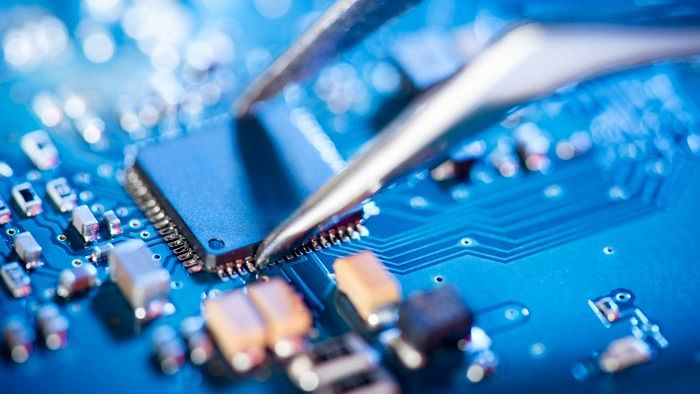
On May 31, the Ministry of Electronics and Information Technology (MeitY) and the nodal agency India Semiconductor Mission (ISM) decided to reopen the incentive schemes for silicon-based semiconductor fabs and display fabs calling for new applications.
Minister of State for MeitY Rajeev Chandrashekhar tweeted that ‘ISM is today announcing that it will start accepting and considering new applicants for fabs from new & existing applicants’. From this it is safe to infer that none of the three companies that applied for silicon fabs or the two that applied for display fabs before the first deadline of February 15, 2022 qualified for it.
However, the minister’s claim that the first-round applications were for 28-nm technology nodes could be misleading. The December 21, 2021 notification called for 28-65 nm technology nodes, and later on October 4, 2022, a new notification was published for ‘any node’ and offering a uniform incentive of up to 50 per cent of project cost if approved.
A press release put out by MeitY on May 31 did not have any information on the background of why a ‘modified scheme’ notified in October 2022 is being ‘opened for applications’ only on June 1, 2023. Interestingly, in its 17-18 months of its existence, the ISM has been able to evaluate and approve only five out of the 26 applications received from design companies for incentives, and none from the other categories such as Outsourced Semiconductor Assembly and Test (OSAT) units, compound semiconductors, etc. These categories are open till December 2024, and it appears that many of the applicants have been waiting for over a year for an approval.
At about the time of the MeitY’s announcement, there were media reports suggesting that India’s semiconductor scheme has hit a roadblock. There are several steps the Narendra Modi government could have taken to prevent such a situation. Modi 1.0 (2014-2019) did not see any serious efforts in achieving commercial silicon fabs. A proposal made around 2015-16 for an analog chip fab in Indore eventually did not materialise. Those in the know of developments some of whom this author had interacted with, were of the view that the government was not initially serious about this and was even ill-advised that this was an ‘old technology’ without knowing how analog fabs work.
Even though the Finance Minister promised a transparent scheme in her first Budget speech of July 2019, MeitY took two-and-a-half years to launch a policy. When the scheme details came out, the incentive offer was lower for 65-nm and 45-nm, and 50 percent only for 28-nm or below. It took another 9-10 months to modify and make it uniform.
Vedanta’s CEO for fabs recently confirmed that for 28-nm the company has a license only from Belgium-based IMEC, but for 40-nm it has production-grade license from an undisclosed company. The IMEC technology should not qualify as production-grade technology, however, Vedanta continues to quote project costs even higher than expected for 28-nm fabs till date, which may have spoiled its chances in the first-round evaluation.
Going by a media report, Vedanta's talks to get a production-grade technology license for 40-nm happened only one year after the first-round deadline, hinting at a lack of speedy and clear communication from the ISM to the applicants.
With policy being modified and applicants allowed to tweak their proposals after the first deadline, MeitY could have simply reopened the scheme much earlier; instead, the government and the ISM have not been quick off the blocks.
What next? Vedanta could re-apply for a 40-nm fab at a cost of around $5 billion; however, if the ISM insists that its technology provider STMicroelectronics take a non-trivial stake in the venture, it could delay the progress. As for another applicant, ISMC, ‘Tower is likely to re-evaluate taking part in the venture based on how its deal talks with Intel pan out’.
We may see some new groups applying, such as Tata Electronics; whether it will get a technology partner like the PSMC will have to be seen.
The ISM will need to act in a much faster, dedicated, and transparent way going forward for such an important mission to succeed, and for that it needs strong and industry-experienced leadership.
(Arun Mampazhy is a semiconductor engineer. Twitter: @nano_arun.)
Disclaimer: The views expressed above are the author's own. They do not necessarily reflect the views of DH.